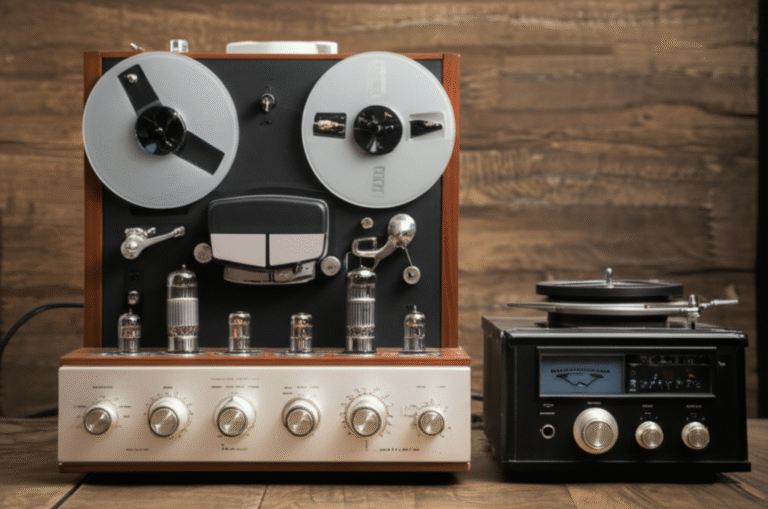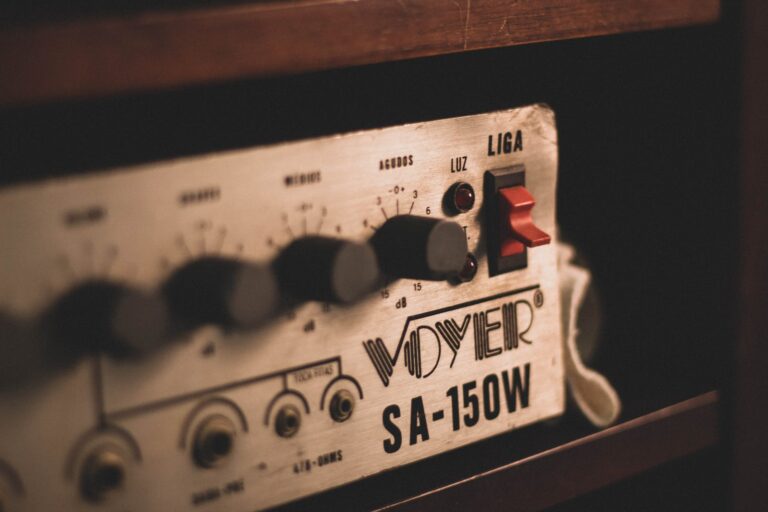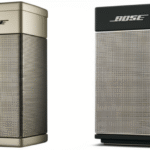Support our educational content for free when you purchase through links on our site. Learn more
Top 8 HiFi Speaker Brands of the 80s You Need to Know 🎵 (2025)

Step into the time machine with us and rediscover the golden era of 1980s hi-fi speakers—a decade where innovation met style, and sound quality soared to new heights. Whether you grew up rocking out to arena anthems or mixing tracks in a home studio, the brands that defined this era still resonate with audiophiles today. But what made these speakers so special? And which brands truly ruled the roost?
In this deep dive, we unravel the stories behind the top 8 legendary hi-fi speaker brands of the 80s, explore iconic models that still turn heads, and reveal insider tips on collecting and restoring these vintage sound machines. Plus, we’ll uncover how 80s pop culture shaped speaker design in ways you might never have imagined. Ready to unlock the secrets of the decade’s best sound gear? Let’s crank it up! 🎶
Key Takeaways
- Japanese giants like Pioneer, Kenwood, and Yamaha dominated the 80s market with innovative, affordable speakers that balanced quality and accessibility.
- European brands such as Bowers & Wilkins, KEF, and Bang & Olufsen brought craftsmanship and sonic refinement to the forefront.
- American legends JBL and Infinity delivered powerful, dynamic sound that defined rock and pop listening experiences.
- Iconic models like the JBL L100 Century and Yamaha NS-10 remain highly sought after for their unique sound signatures and vintage charm.
- Restoring vintage 80s speakers can breathe new life into these durable classics, but requires careful inspection and some DIY know-how.
- The 80s speaker designs were heavily influenced by music trends and pop culture, from arena rock’s demand for power to new wave’s focus on clarity.
Ready to explore or shop vintage-inspired speakers? Check out these links for some of the best 80s brands still rocking today:
- 👉 Shop Pioneer Speakers: Amazon | Pioneer Official
- Explore Yamaha NS Series: Amazon | Yamaha Official
- Discover Bowers & Wilkins: Amazon | B&W Official
Dive in, and let the sound of the 80s inspire your next audio adventure!
Table of Contents
- Quick Tips and Facts About 80s HiFi Speaker Brands 🎶
- The Golden Era of HiFi: A Deep Dive into 1980s Speaker Brands and Innovations 🔊
- 1. Legendary 80s HiFi Speaker Brands You Should Know About 🏆
- 2. Iconic Speaker Models from the 1980s That Still Rock Today 🎸
- 3. What Made 80s Speakers Unique? Exploring Design, Tech & Sound Quality 🎛️
- 4. Vintage vs Modern: How 80s HiFi Speakers Compare to Today’s Audio Gear ⚖️
- 5. Collecting and Restoring 1980s HiFi Speakers: Tips, Tricks & Pitfalls 🛠️
- 6. The Role of Japanese, European, and American Brands in the 80s Speaker Market 🌏
- 7. How to Spot Authentic 80s HiFi Speakers and Avoid Fakes 🕵️♂️
- 8. The Influence of 80s Pop Culture and Music Trends on Speaker Design 🎤
- Conclusion: Why 80s HiFi Speakers Still Matter to Audiophiles Today 🎧
- Recommended Links for 80s HiFi Speaker Enthusiasts 🔗
- FAQ: Your Burning Questions About 1980s HiFi Speakers Answered ❓
- Reference Links and Resources for Further Exploration 📚
Quick Tips and Facts About 80s HiFi Speaker Brands 🎶
Want to dive into the rad world of 1980s hi-fi speakers? 🤘 Here’s a crash course before we crank up the volume:
- The 1980s were a golden age for speaker design and innovation. Think groundbreaking acoustic research, new materials like polypropylene and Mylar, and the rise of computer-aided design (CAD). 🤯
- Japanese brands dominated the market. Giants like Pioneer, Kenwood, and Yamaha were producing high-quality, affordable audio gear that flooded the global market. 🇯🇵
- European brands maintained their prestige. Bowers & Wilkins, KEF, and B&O continued to deliver high-end speakers known for their refined sound and craftsmanship. 🇪🇺
- American brands like JBL and Infinity held their own. They were known for their powerful, dynamic sound, often favored by rock and pop music lovers. 🇺🇸
- Vintage 80s speakers can be a steal! You can often find them for a fraction of the price of modern equivalents, but be prepared to do some restoration work. 💰
- Don’t underestimate the power of a good amplifier. To get the most out of your 80s speakers, you’ll need a quality amp that can drive them properly. 앰프
Want to learn more about the iconic hi-fi brands that shaped the soundscape of the 1980s? Check out our comprehensive article: What were the hifi brands in the 80s?.
The Golden Era of HiFi: A Deep Dive into 1980s Speaker Brands and Innovations 🔊
The 1980s were a time of bold experimentation and fierce competition in the audio industry. It was the decade that saw the rise of CD players, cassette decks, and the dawn of digital audio. But amidst all this technological upheaval, one thing remained constant: the pursuit of pure, unadulterated sound. 🎧
The Rise of Home Audio
The 80s witnessed an explosion in home audio setups. People were investing in dedicated listening rooms, complete with turntables, amplifiers, and of course, speakers. This boom in demand fueled innovation, leading to a dizzying array of speaker designs and technologies.
Technological Advancements
- New Materials: Gone were the days of simple paper cones. The 80s saw the introduction of new driver materials like polypropylene, Kevlar, and Mylar, each with its own unique sonic characteristics.
- Computer-Aided Design (CAD): CAD allowed engineers to model and simulate speaker designs with unprecedented precision, leading to more accurate and efficient drivers.
- Active Crossovers: Active crossovers, which use electronic components to divide the audio signal into different frequency ranges, became increasingly sophisticated, allowing for more precise control over the sound.
A Global Marketplace
The 1980s saw the rise of Japan as a global powerhouse in electronics. Brands like Sony, Pioneer, and Technics were producing high-quality, affordable audio gear that was accessible to a wider audience. This put pressure on established European and American brands to innovate and compete.
1. Legendary 80s HiFi Speaker Brands You Should Know About 🏆
Ready to rock out like it’s 1989? We’re about to drop some serious knowledge about the legendary speaker brands that defined an era. These weren’t just boxes that made noise—they were works of art, meticulously engineered to deliver an unparalleled listening experience.
Japanese Powerhouses 🇯🇵
- Pioneer: Known for their innovative designs and commitment to high fidelity, Pioneer was a dominant force in the 80s. Their HPM series, with its iconic blue woofers, is still highly sought after by collectors.
- 👉 CHECK PRICE on: Amazon | eBay | Pioneer Official Website
- Kenwood: Kenwood was another Japanese giant that produced a wide range of audio components, including some seriously impressive speakers. Their LS series, known for its warm, natural sound, is a favorite among audiophiles.
- 👉 CHECK PRICE on: Amazon | eBay | Kenwood Official Website
- Yamaha: Yamaha wasn’t just making pianos and motorcycles in the 80s—they were also crafting some killer speakers. Their NS series, particularly the NS-10 studio monitors, became legendary for their accuracy and detail.
- 👉 CHECK PRICE on: Amazon | Guitar Center | Yamaha Official Website
European Craftsmanship 🇪🇺
- Bowers & Wilkins: B&W has always been synonymous with high-end audio, and the 80s were no exception. Their iconic 801 series, with its distinctive yellow Kevlar woofers, was a statement piece in any listening room.
- 👉 CHECK PRICE on: Amazon | eBay | Bowers & Wilkins Official Website
- KEF: KEF was another British brand known for its innovative designs and exceptional sound quality. Their Reference series, with its Uni-Q driver technology, was highly regarded by audiophiles.
- 👉 CHECK PRICE on: Amazon | Crutchfield | KEF Official Website
- Bang & Olufsen: B&O has always marched to the beat of their own drum, and their 80s speakers were no exception. Known for their sleek, minimalist designs and impressive sound quality, B&O speakers were a status symbol.
- 👉 CHECK PRICE on: Amazon | eBay | Bang & Olufsen Official Website
American Icons 🇺🇸
- JBL: JBL has a long and storied history in the audio industry, and their 80s speakers were some of their most iconic. Their L100 Century series, with its distinctive orange grilles, was a staple in countless living rooms.
- 👉 CHECK PRICE on: Amazon | Guitar Center | JBL Official Website
- Infinity: Infinity was known for pushing the boundaries of speaker design, and their 80s offerings were no exception. Their RS series, with its innovative EMIT tweeter technology, delivered incredibly detailed and transparent sound.
- 👉 CHECK PRICE on: Amazon | eBay | Infinity Official Website
This is just a small taste of the amazing speaker brands that were rocking the world in the 1980s. Stay tuned as we crank up the volume and explore the iconic models that defined the decade!
2. Iconic Speaker Models from the 1980s That Still Rock Today 🎸
Fasten your seatbelts, audiophiles, because we’re about to take a trip down memory lane to revisit some of the most iconic speaker models from the 1980s. These weren’t just speakers—they were cultural touchstones, gracing the covers of albums, appearing in blockbuster movies, and defining the sound of a generation.
The Chart-Toppers 🎶
- JBL L100 Century: With its instantly recognizable orange grilles and powerful sound, the L100 Century was more than just a speaker—it was a statement piece. It graced countless living rooms and became synonymous with the 1970s and 80s hi-fi boom.
- Polk Audio SDA-SRS: Polk Audio’s SDA technology was revolutionary, using psychoacoustics to create a wider, more immersive soundstage. The SDA-SRS, with its imposing size and impressive performance, was the flagship model of the SDA line.
- Bose 901 Series VI: Bose has always been known for its unconventional approach to audio, and the 901 Series VI was no exception. Its nine-driver array, with most of the drivers facing away from the listener, created a spacious, reflected sound that was unlike anything else on the market.
The Studio Legends 🎧
- Yamaha NS-10: These unassuming studio monitors became an industry standard, known for their brutally honest sound reproduction. Countless classic albums were mixed and mastered on NS-10s, making them a must-have for any serious recording studio.
- Auratone 5C Super Sound Cube: Don’t let their diminutive size fool you—these little cubes were a secret weapon for audio engineers. Their lo-fi sound helped engineers ensure that their mixes would translate well to less-than-ideal listening environments.
The Hidden Gems 💎
- ADS L810: This German-engineered speaker was known for its exceptional clarity and detail. Its use of a linear-phase crossover network ensured that all frequencies arrived at the listener’s ear at the same time, resulting in a more accurate and natural sound.
- KEF 104/2: KEF’s Uni-Q driver technology, which placed the tweeter in the acoustic center of the midrange driver, was a game-changer. The 104/2, with its distinctive curved baffle, delivered exceptional imaging and a wide sweet spot.
These are just a few of the many iconic speaker models that made the 1980s such a golden age for audio. Each of these speakers had its own unique character and charm, and they continue to be sought after by collectors and audiophiles today.
3. What Made 80s Speakers Unique? Exploring Design, Tech & Sound Quality 🎛️
The 1980s were a time of bold experimentation in speaker design. Driven by technological advancements and a desire to push the boundaries of audio fidelity, engineers were constantly innovating, resulting in a diverse range of speakers with unique sonic signatures.
Design: Bold and Unapologetic
- Size Matters: 80s speakers weren’t afraid to take up space. Towering floor-standers with multiple drivers were all the rage, reflecting the “bigger is better” ethos of the decade.
- Materials and Finishes: Wood veneer finishes were still popular, but we also saw the emergence of more modern materials like black ash, piano black, and even brightly colored lacquers.
- Distinctive Grilles: Speaker grilles weren’t just functional—they were design elements in their own right. From JBL’s iconic orange grilles to the intricate patterns found on some high-end models, 80s speaker grilles added a touch of personality to any listening space.
Technology: A Fusion of Old and New
- Dynamic Drivers: While electrostatic and planar magnetic speakers were gaining traction, the vast majority of 80s speakers still relied on dynamic drivers. However, advancements in materials science led to the use of new cone materials like polypropylene, Kevlar, and Mylar, each with its own unique sonic characteristics.
- Crossover Networks: Crossovers, which divide the audio signal into different frequency ranges and send them to the appropriate drivers, became increasingly sophisticated. Active crossovers, which use electronic components to perform this task, allowed for more precise control over the sound.
- Cabinet Construction: Speaker cabinets became more robust and better dampened to reduce unwanted vibrations and resonances. This led to a cleaner, more accurate sound.
Sound Quality: Warmth, Punch, and Dynamics
- Warm and Engaging: Many 80s speakers are known for their warm, inviting sound signature. This is partly due to the use of larger woofers and cabinets, which tend to produce more bass.
- Dynamic and Punchy: 80s speakers were often designed to deliver a powerful, dynamic listening experience. This was the era of arena rock, after all, and speakers needed to be able to handle the energy of live performances.
- Wide Soundstages: Many 80s speakers were designed to create a wide, immersive soundstage. This was achieved through the use of multiple drivers, careful cabinet design, and innovative technologies like Polk Audio’s SDA (Stereo Dimensional Array).
4. Vintage vs Modern: How 80s HiFi Speakers Compare to Today’s Audio Gear ⚖️
The eternal debate: vintage vs. modern. It’s a question that has plagued audiophiles for generations. Do those dusty old speakers from the 80s still hold their own against the sleek, technologically advanced audio gear of today? Let’s crank up the volume and find out! 🎧
Sound Signature: A Matter of Taste
- Vintage Warmth: Many vintage speakers, particularly those from the 80s, are known for their warm, forgiving sound signature. This is often attributed to the use of larger woofers, paper or doped fabric cones, and less complex crossover networks.
- Modern Precision: Modern speakers, on the other hand, tend to have a more neutral, analytical sound. This is due in part to advancements in driver technology, computer-aided design, and the use of digital signal processing (DSP).
Build Quality: Built to Last vs. Mass Production
- Tanks in Disguise: Many vintage speakers were built like tanks, with solid wood cabinets, robust drivers, and high-quality components. They were designed to last a lifetime.
- Cost-Cutting Measures: While there are still many high-quality modern speakers on the market, some manufacturers have cut corners on build quality to reduce costs. This is especially true in the lower price brackets.
Technology: Evolution vs. Revolution
- Analog Roots: Vintage speakers are purely analog devices. They rely on the laws of physics and the skillful engineering of drivers, crossovers, and cabinets to produce sound.
- Digital Domain: Modern speakers often incorporate digital technologies like DSP, active crossovers, and even built-in amplifiers. While these technologies can enhance performance, they also add complexity.
The Verdict: It Depends!
There’s no clear winner in the vintage vs. modern speaker debate. It ultimately comes down to personal preference, budget, and listening habits.
- For vintage lovers: If you crave the warm, forgiving sound of yesteryear and appreciate the craftsmanship of older speakers, then vintage might be the way to go. Just be prepared to do some restoration work.
- For modern enthusiasts: If you prioritize accuracy, detail, and a wide soundstage, then modern speakers are an excellent choice. Plus, you’ll have the peace of mind of knowing that your speakers are covered by a warranty.
5. Collecting and Restoring 1980s HiFi Speakers: Tips, Tricks & Pitfalls 🛠️
So you’ve caught the vintage audio bug, and you’re on the hunt for a pair of those sweet-sounding 80s speakers? We get it—there’s just something special about the warm, nostalgic sound of vintage hi-fi gear. But before you start scouring eBay and thrift stores, let us equip you with some essential tips and tricks for navigating the world of vintage speaker collecting and restoration.
The Thrill of the Hunt: Where to Find Vintage Speakers
- Online Marketplaces: eBay, Craigslist, Facebook Marketplace—these are your digital hunting grounds. Be prepared to be patient, persistent, and quick on the draw when you spot a good deal.
- Thrift Stores and Pawn Shops: You never know what treasures you might unearth in these hidden gems. It’s all about being in the right place at the right time.
- Garage Sales and Estate Sales: These can be goldmines for vintage audio gear, especially if you’re in an area with an older demographic.
- Local Audio Shops: Some audio shops specialize in vintage gear or may have a used section where you can find hidden gems.
Inspecting Your Potential Treasures: What to Look For
- Cabinet Condition: Check for scratches, dents, water damage, or veneer peeling. Minor cosmetic issues can often be addressed, but major structural damage is a red flag.
- Driver Condition: Inspect the cones for tears, holes, or dents. Gently press on the woofers to check for any scraping or rubbing sounds, which could indicate voice coil damage.
- Surrounds: The foam surrounds on older speakers are prone to deterioration. Crumbling or cracked surrounds will need to be replaced.
- Crossovers: While you won’t be able to fully test the crossovers without hooking up the speakers, visually inspect them for any signs of damage, such as burnt components or loose connections.
Breathing New Life into Old Speakers: Restoration Basics
- Cabinet Refinishing: Minor scratches and dents can often be repaired with wood filler and touch-up paint. For more extensive damage, you might consider stripping and refinishing the cabinets.
- Driver Refoaming: Replacing deteriorated foam surrounds is a relatively straightforward process. Kits are readily available online, and there are plenty of tutorials available to guide you through the process.
- Crossover Recap: Over time, the capacitors in crossover networks can dry out and lose their effectiveness. Replacing these capacitors with new ones can significantly improve the sound quality of your speakers.
A Word of Caution: Know Your Limits
While restoring vintage speakers can be a rewarding experience, it’s important to know your limits. If you’re not comfortable working with electronics or woodworking, it’s best to leave major repairs to the professionals.
6. The Role of Japanese, European, and American Brands in the 80s Speaker Market 🌏
The 1980s was a time of intense competition in the global speaker market. Japanese, European, and American brands were all vying for a piece of the pie, each bringing their own unique strengths and philosophies to the table. Let’s take a closer look at the roles these regions played in shaping the soundscape of the decade.
Japanese Innovation and Mass Production 🇯🇵
- The Rise of the Tech Giants: Japanese brands like Sony, Pioneer, Kenwood, Yamaha, and Technics rose to prominence in the 70s and 80s, becoming synonymous with quality and affordability.
- Mass Production and Accessibility: Japan’s expertise in electronics manufacturing allowed them to produce high-quality audio gear at competitive prices, making hi-fi more accessible to the masses.
- Innovation and Features: Japanese brands were known for their innovative designs and willingness to embrace new technologies. They were often at the forefront of incorporating features like quartz-locked tuning, digital displays, and remote controls.
European Craftsmanship and Refinement 🇪🇺
- Legacy of Excellence: European brands like Bowers & Wilkins, KEF, B&O, Celestion, and Tannoy had a long and storied history of producing high-end audio equipment.
- Focus on Craftsmanship: European speakers were known for their meticulous craftsmanship, often featuring hand-built cabinets, high-quality drivers, and sophisticated crossover networks.
- Refined Sound Signature: European speakers were often associated with a more refined, detailed, and accurate sound signature, appealing to audiophiles who valued sonic purity.
American Power and Innovation 🇺🇸
- Bold and Powerful: American brands like JBL, Infinity, Klipsch, and Polk Audio were known for their powerful, dynamic sound signatures, often favored by rock and jazz enthusiasts.
- Innovation and Experimentation: American brands were not afraid to push the boundaries of speaker design, experimenting with new materials, driver technologies, and cabinet constructions.
- Homegrown Heroes: American speaker brands held a special place in the hearts of many American audiophiles, representing homegrown innovation and a commitment to high-fidelity sound reproduction.
7. How to Spot Authentic 80s HiFi Speakers and Avoid Fakes 🕵️♂️
The vintage audio market is, unfortunately, not immune to counterfeiters. As the demand for vintage hi-fi gear continues to rise, so too does the number of unscrupulous individuals looking to make a quick buck by passing off fakes as the real deal. But fear not, fellow audiophiles! We’re here to equip you with the knowledge you need to spot those phonies and ensure you’re getting the genuine article.
1. Do Your Research: Knowledge is Power
- Know Your Models: Before you even start browsing, familiarize yourself with the specific models you’re interested in. Study their design features, driver configurations, logos, and any other unique identifiers.
- Check Online Resources: Websites like HiFi Engine and AudioKarma are invaluable resources for researching vintage audio gear. You can often find brochures, manuals, and photos of original models to help you authenticate a potential purchase.
2. Inspect the Details: The Devil’s in the Details
- Logos and Badges: Examine the logos and badges closely. Counterfeiters often cut corners here, so look for inconsistencies in font, spacing, or overall quality.
- Driver Cones and Surrounds: Original drivers often have unique markings or codes. Check for any inconsistencies in the cone material, surround material, or overall construction.
- Crossover Components: Vintage speakers often used high-quality crossover components from reputable manufacturers. Be wary if the crossover components look cheap or generic.
3. Trust Your Gut: If It Seems Too Good to Be True…
- Unrealistic Pricing: If the price seems too good to be true, it probably is. Be especially wary of sellers offering significantly lower prices than what you’d typically find for a particular model.
- Vague Descriptions: Be wary of listings with vague descriptions or a lack of detailed photos. Reputable sellers will provide ample information and clear images of the product.
- Suspicious Seller Behavior: Trust your instincts. If the seller seems evasive, pushy, or unwilling to answer your questions, it’s best to walk away.
4. When in Doubt, Seek Expert Opinion
If you’re unsure about the authenticity of a vintage speaker, don’t hesitate to seek the opinion of an expert. Experienced vintage audio technicians or reputable dealers can help you determine whether a speaker is the real deal or a clever fake.
8. The Influence of 80s Pop Culture and Music Trends on Speaker Design 🎤
The 1980s were a decade of bold fashion choices, larger-than-life personalities, and, of course, unforgettable music. But did you know that the pop culture and music trends of the era also had a profound influence on speaker design? Let’s crank up the cassette deck, tease our hair, and explore the fascinating interplay between 80s pop culture and the evolution of speaker technology.
The Rise of Arena Rock and the Demand for Power 🤘
- Bigger, Louder, Bolder: The 80s saw the rise of arena rock bands like Van Halen, Def Leppard, and Bon Jovi, who demanded powerful sound systems that could fill massive stadiums.
- Speakers That Could Handle the Heat: This led to the development of speakers with higher power handling capabilities, larger woofers, and more robust cabinets to handle the intense sonic demands of arena rock.
- The Birth of the “Wall of Sound”: The pursuit of louder and more powerful sound systems culminated in the iconic “wall of sound” setups used by bands like Pink Floyd and Grateful Dead, featuring stacks upon stacks of speakers to create an immersive sonic experience.
The New Wave Movement and the Emphasis on Clarity 🌊
- Synthesizers and Electronic Drums: The new wave movement, with its emphasis on synthesizers, electronic drums, and catchy melodies, demanded speakers with exceptional clarity and detail.
- The Rise of the Two-Way and Three-Way Speaker: This led to the increasing popularity of two-way and three-way speaker designs, which used separate drivers for different frequency ranges to reproduce the complex sonic textures of new wave music with greater accuracy.
- A Focus on Imaging and Soundstaging: New wave artists often experimented with stereo effects and spatial placement of instruments, leading to a greater emphasis on speaker imaging and soundstaging capabilities.
The CD Revolution and the Pursuit of Accuracy 💿
- The Dawn of Digital Audio: The introduction of the compact disc (CD) in 1982 ushered in a new era of digital audio, promising greater fidelity and clarity than ever before.
- Speakers Designed for the Digital Age: Speaker manufacturers responded by developing speakers with wider frequency responses, lower distortion, and more accurate transient responses to take full advantage of the CD’s sonic capabilities.
- A Shift Towards Neutrality: The pursuit of sonic accuracy led to a shift away from the warm, forgiving sound of some vintage speakers towards a more neutral and analytical sound signature.
Conclusion: Why 80s HiFi Speakers Still Matter to Audiophiles Today 🎧
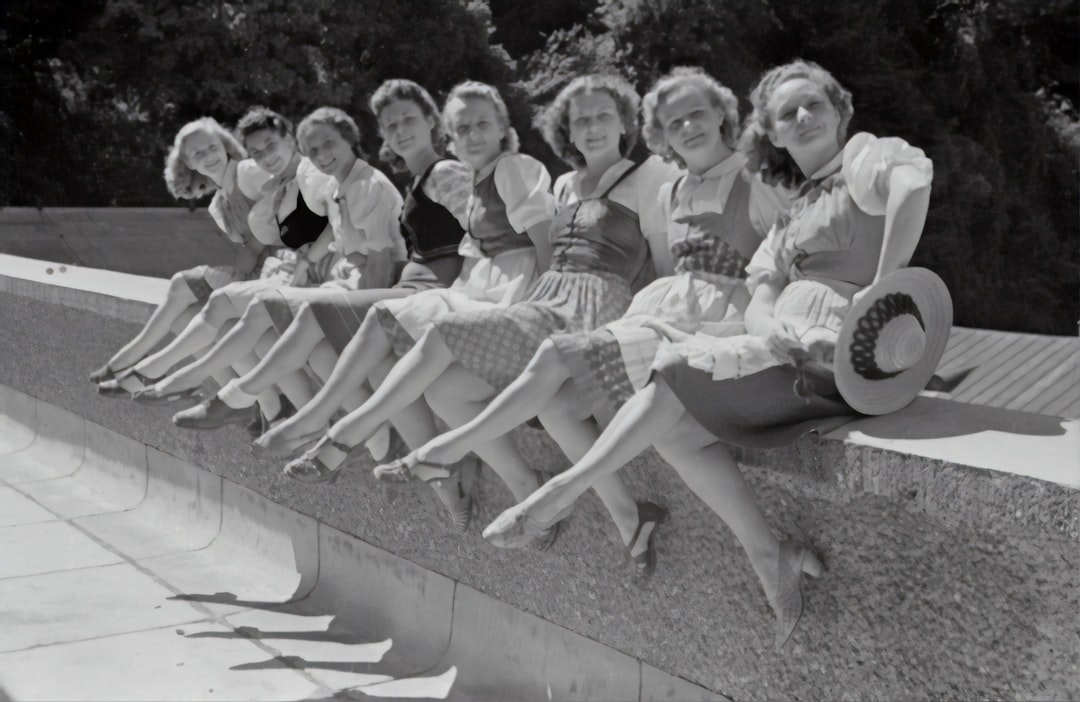
After cruising through the vibrant landscape of 1980s hi-fi speakers, it’s clear why these vintage gems continue to captivate audiophiles and collectors alike. The decade was a melting pot of innovation, craftsmanship, and bold design choices that gave birth to speakers with unique sonic signatures and timeless aesthetics. Whether it’s the warm, punchy sound of a JBL L100 Century or the precise imaging of a KEF 104/2, 80s speakers offer a listening experience that’s both nostalgic and deeply satisfying.
Positives:
- Rich, warm sound that many modern speakers sometimes lack, perfect for classic rock, jazz, and pop.
- Robust build quality with solid wood cabinets and durable drivers.
- Iconic designs that double as conversation pieces in any room.
- Affordability compared to new high-end speakers, especially if you’re willing to invest some time in restoration.
- A wide variety of brands and models catering to different tastes and budgets.
Negatives:
- Aging components like foam surrounds and capacitors often require replacement.
- Bulkier sizes may not suit smaller modern living spaces.
- Lack of modern digital features such as DSP or wireless connectivity.
- Potential scarcity of parts for certain rare models.
If you’re an audiophile who appreciates authenticity, character, and a bit of DIY spirit, 80s hi-fi speakers are a treasure trove waiting to be explored. For those who prioritize cutting-edge technology and convenience, pairing vintage speakers with modern amplifiers or DACs can create the best of both worlds.
Ready to start your vintage audio journey? Remember, patience and research are your best friends. And if you want to dive deeper into the brands that made the 80s so special, check out our detailed guide: What were the hifi brands in the 80s?.
Recommended Links for 80s HiFi Speaker Enthusiasts 🔗
Here’s your curated shopping list and resources to kickstart or expand your vintage hi-fi collection:
-
Pioneer HPM Series:
Amazon | eBay | Pioneer Official Website -
Kenwood LS Series:
Amazon | eBay | Kenwood Official Website -
Yamaha NS Series:
Amazon | Guitar Center | Yamaha Official Website -
Bowers & Wilkins 801 Series:
Amazon | eBay | Bowers & Wilkins Official Website -
KEF Reference Series:
Amazon | Crutchfield | KEF Official Website -
Bang & Olufsen Speakers:
Amazon | eBay | Bang & Olufsen Official Website -
JBL L100 Century:
Amazon | Guitar Center | JBL Official Website -
Infinity RS Series:
Amazon | eBay | Infinity Official Website
Recommended Books on Vintage Audio & Speaker Restoration
- The Complete Guide to High-End Audio by Robert Harley — Amazon
- Speaker Building 201 by Ray Alden — Amazon
- The Art of Speaker Design by David B. Weems — Amazon
FAQ: Your Burning Questions About 1980s HiFi Speakers Answered ❓
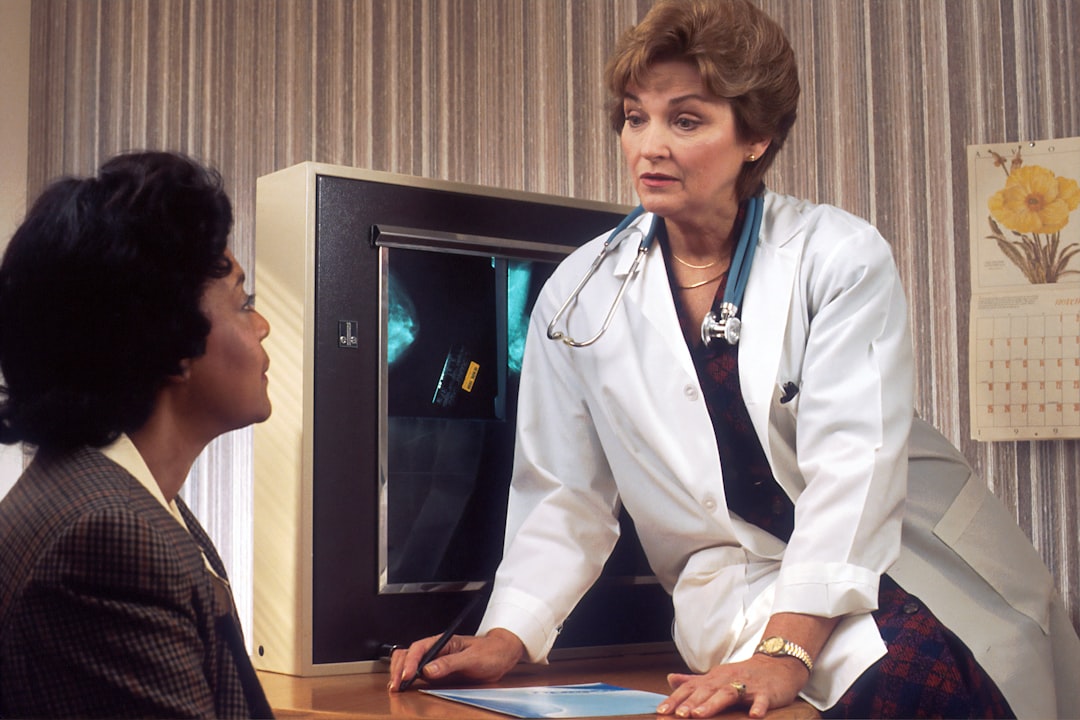
What were the most popular speaker brands of the 1980s for home audio systems?
The 1980s home audio market was dominated by a mix of Japanese, European, and American brands. Pioneer, Kenwood, and Yamaha were household names in Japan, offering affordable yet high-quality speakers. European brands like Bowers & Wilkins (B&W), KEF, and Bang & Olufsen (B&O) were revered for their craftsmanship and sonic accuracy. In the U.S., JBL, Infinity, and Polk Audio were favorites, especially among fans of rock and jazz, thanks to their powerful and dynamic sound signatures. This blend of accessibility, innovation, and prestige made these brands the go-to choices for audiophiles and casual listeners alike.
Read more about “Find Your Perfect 1980s Stereo System for Sale: 10 Iconic Picks 🎶 …”
Which 80s hi-fi speaker brands are still producing high-quality sound equipment today?
Many iconic 80s brands have stood the test of time and continue to innovate:
- Bowers & Wilkins (B&W): Continues to produce premium speakers with cutting-edge technology while honoring their heritage.
- KEF: Still pioneers Uni-Q driver technology and offers a wide range of modern speakers.
- Yamaha: Maintains a strong presence in both consumer and professional audio markets.
- JBL: Now part of Harman, JBL continues to deliver powerful speakers for home and professional use.
- Bang & Olufsen: Known for combining design and sound, B&O remains a luxury brand with modern wireless and high-fidelity options.
Others like Pioneer and Kenwood have shifted focus but still produce quality audio gear, often in different categories.
How did 80s hi-fi speakers compare to modern speakers in terms of sound quality and technology?
80s hi-fi speakers are often praised for their warm, rich sound and robust build quality. They typically used larger cabinets and analog crossovers, which contributed to their distinctive sonic character. However, they lack modern features such as digital signal processing (DSP), wireless connectivity, and compact active designs.
Modern speakers tend to emphasize accuracy, neutrality, and convenience, often incorporating advanced materials, computer-aided design, and digital enhancements. While vintage speakers excel in musicality and character, modern speakers offer greater precision and integration with today’s digital ecosystems.
What are some of the rarest and most collectible 80s hi-fi speaker brands and models still sought after by audiophiles?
Some rare and highly collectible 80s speakers include:
- Bowers & Wilkins 801 Series (especially early Kevlar models): Iconic and still revered for their sound and design.
- JBL L100 Century: Their distinctive orange grille and powerful sound make them a cult classic.
- Polk Audio SDA-SRS: Known for innovative stereo dimensional array technology, these are rare finds.
- Yamaha NS-10 Studio Monitors: Legendary in professional circles, prized by collectors for their historical significance.
- ADS L810: A German-engineered speaker with advanced linear-phase crossover technology, highly sought after by audiophiles.
These models often command premium prices and require careful restoration but offer an authentic slice of audio history.
Reference Links and Resources for Further Exploration 📚
- Pioneer Electronics Official Site
- Kenwood USA
- Yamaha USA
- Bowers & Wilkins Official Website
- KEF Official Website
- Bang & Olufsen Official Website
- JBL Official Website
- Infinity Speakers Official Website
- AudioKarma Vintage Audio Forums — What Brand Name Speakers from the 70’s 80’s look like this …
- HiFi Engine Speaker Database
- Audio Brands™ Audio Brand Guides
- Audio Brands™ Hi-Fi Systems
Ready to relive the sound of the 80s or start your vintage speaker journey? Dive in, explore, and let those classic tunes fill your room with timeless warmth! 🎵

